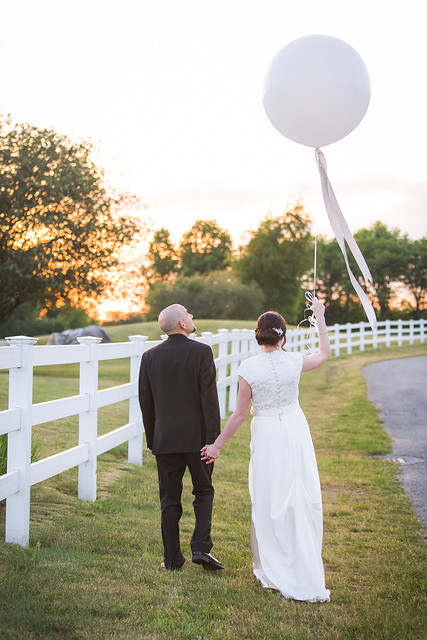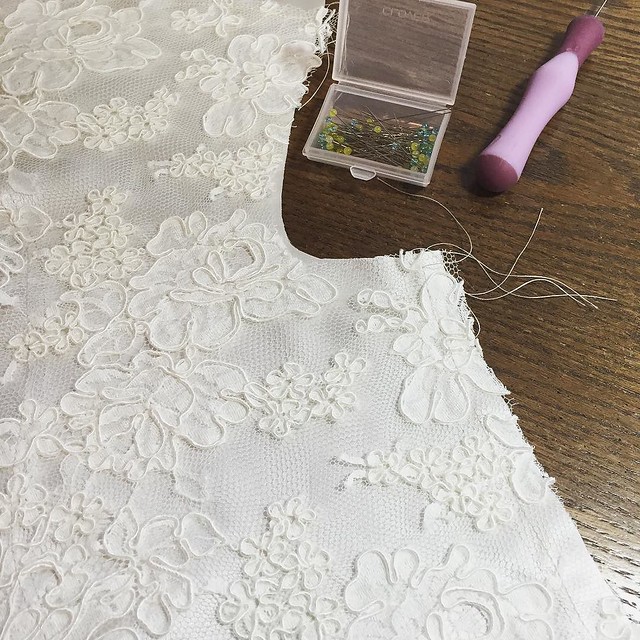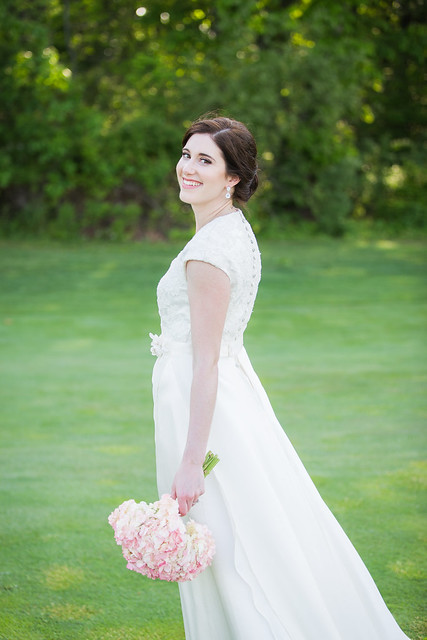
This is a long overdue post – heck, I’ve been married for exactly two months! I made my wedding dress from scratch and lived to tell the tale. Get ready, this is a long post of everything I went through in the last year of making my dress with a lot of photos.
First, I’ll get this right out of the way: making my wedding dress was 100% the right decision for me. I never was one of those little girls that “dreamed” about what kind of wedding I’d have one day, I honestly wanted to get married at City Hall and save the cash for a house. However, I always knew that I’d make my wedding dress – sure, the thought was daunting at first, especially with everything that comes with planning a wedding, but I felt that to not make my wedding dress would be to ignore who I am as a person – I’m a creator.
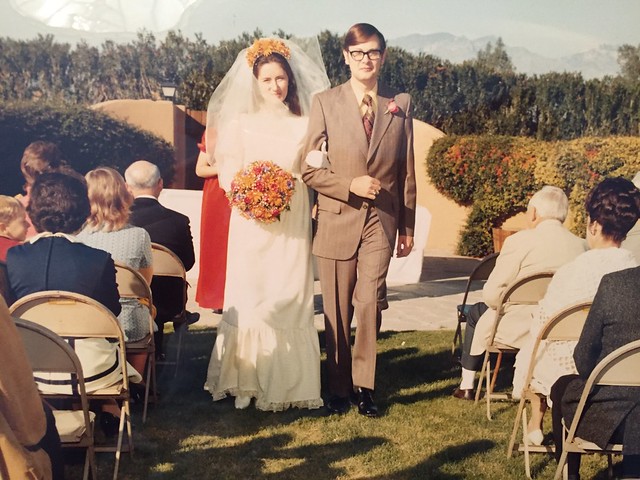
On top of that, I also liked the idea of starting a tradition out of making my wedding dress; my mom made hers when she married my dad in Tucson, AZ in 1972. I’d like to think that if I have a daughter, she’d make her wedding dress as well.
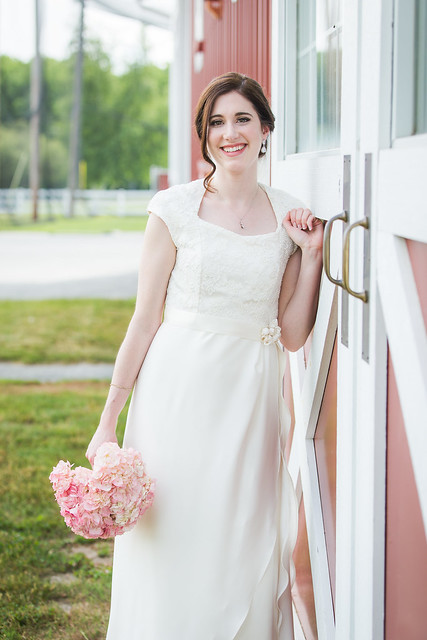
Fabric (all bought in The Garment District in NYC):
Monique Lhuillier French Alencon Lace – Sposabella Lace
Reem Acra Silk – Mood Fabrics
Silk Georgette – Metro Textiles (thank you, Kashi!)
Rayon Lining – Metro Textiles
Belt
Silk Ribbon – M&J Trimming
Silk Flower – M&S Schmalberg, made from my leftover Reem Acra silk fabric
Other Odds and Ends
Faux Bridal Buttons – Joyce Trimming
Zipper – Pacific Trimming
English Netting (for veil) – Vogue Fabrics
Silk thread used for all handwork, cotton/poly thread use for construction
Dress Pattern
Marfy S568
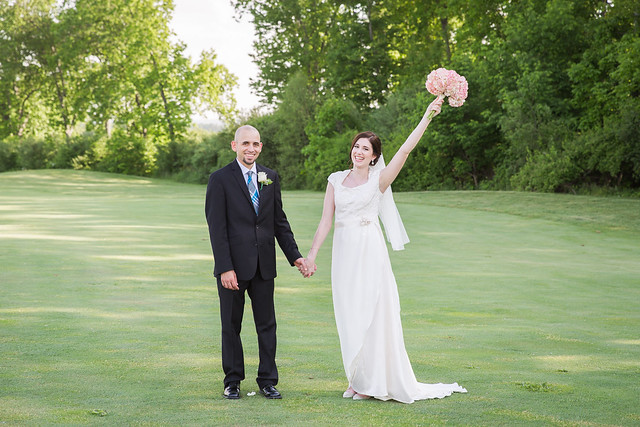
BLOG POSTS
In the past year, I posted several updates on my progress as I went through trial and error figuring out how exactly I was going to make a wedding dress from a pattern that was one size only, had no instructions except for some vague and roughly translated notes here and there on the pattern pieces, and working with fabric I never used before (all of the above I don’t recommend for the faint of heart thinking about making their wedding dress!). I also made some YouTube videos to show the dress in more detail and talk through my thought-process.
Are Wedding Dress Patterns Turning Off Brides?
Starting My Dress
Fitting the Bodice
Getting the Fit Right (Video Post)
Cutting Out My Dress Fabric (Video Post)
Attaching the Skirts (Video Post)
THE DRESS
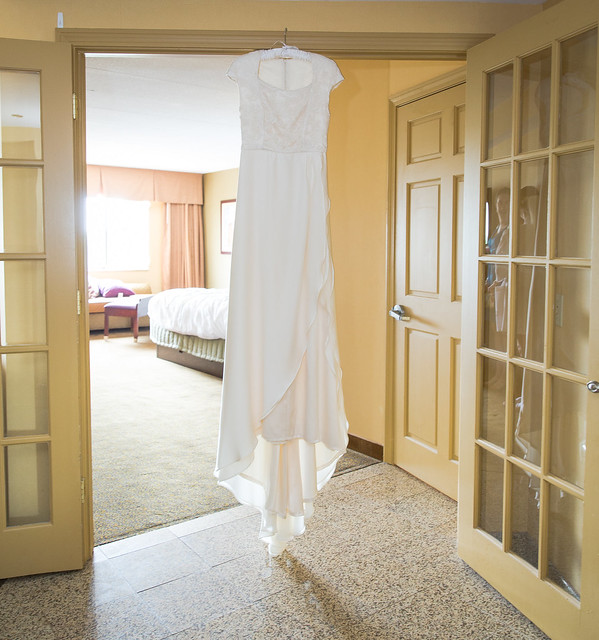
The dress is a flowy dress with a flared skirt that sits at the waist with a sweetheart neckline and kimono capped sleeves. The lace bodice is underlined with silk – I opted to underline each piece individually and then construct the bodice instead of sewing the lace together with appliqué seams for a seamless look, sew the underlining pieces together, and then joining the two layers to make the bodice. There are three layers for the skirt – the silk underskirt, and then two rounded overskirts of silk georgette that open at the side and are gathered with small pleats. The entire dress is lined in a coordinating rayon lining.
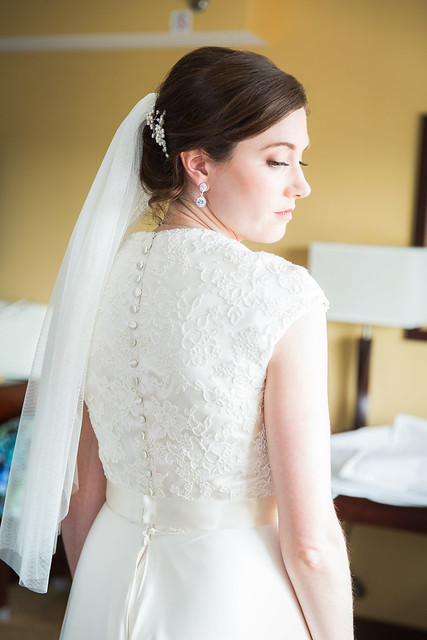
I wanted to add some kind of visual interest to the back of my dress, so I sewed tiny faux bridal buttons down one side of the zipper seam (they have a fabric shank, not a real shank, which allows the button to be sewn closer to the garment).
You can also see a bit of an opening in my overskirts in the above photo. Because of the flowy nature of the shape of the skirts and the fabric, I didn’t want the overskirts to be anchored down as part of the zippered center back seam so they could move freely and naturally. I used a tutorial at Grainline Studio to make the layers free hanging; they didn’t turn out as well as I hoped since you can see the openings in the back, but I think it resulted in a better look than having a zipper go through my silk georgette. I also used a small clear snap to close up the opening a little more between the two sides of the skirts.
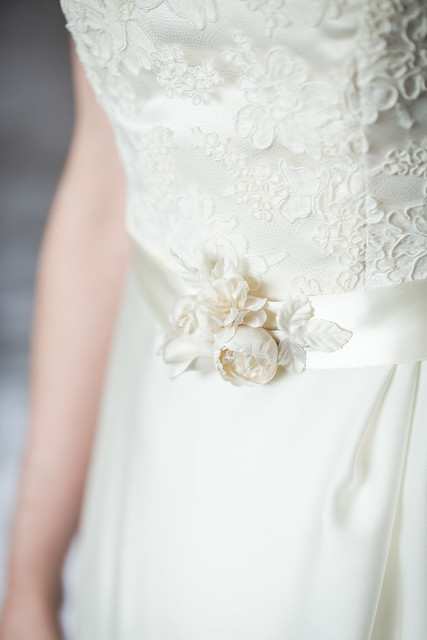
The belt was a tricky element for me to figure out since I wasn’t sure how I wanted to decorate it. I knew it needed a motif or something at the side where the skirts gather at the side opening, but I couldn’t find anything that I liked or would compliment the design of the lace. After stumbling upon this belt at BHLDN, I knew it was the look I wanted to have for my dress…but when I saw the price at $500, I burst out laughing. No way!!
M&S Schmalberg (also known as Custom Fabric Flowers) came to the rescue. I called them up to find out how to place a custom order, sent over the photo of the belt I was trying to recreate at a smaller scale, and they said they were very familiar with the original belt – hello, awesome! I had just enough leftover silk from my dress (about a yard) to send to their facility in NYC, and within a week they sent back the finished floral arrangement. I secured the blooms and leaves to the silk ribbon with a few small stitches and presto – a custom, coordinating bridal belt at a fraction of the cost of the inspiration belt.
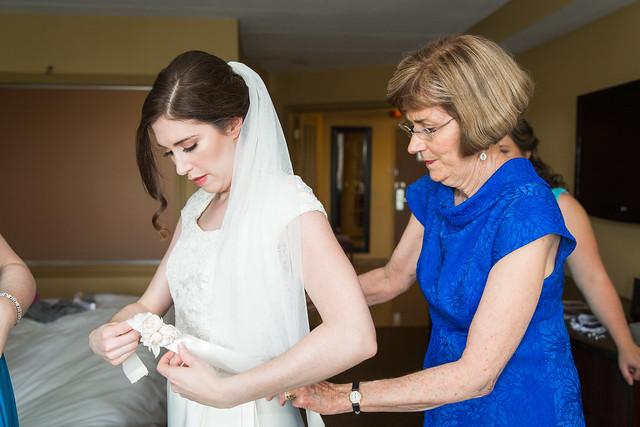
The belt secures in the back with two ivory hooks and eyes instead of tying in a bow like some bridal belts. The hooks got stuck on the lace throughout the evening, which was a little annoying at times.
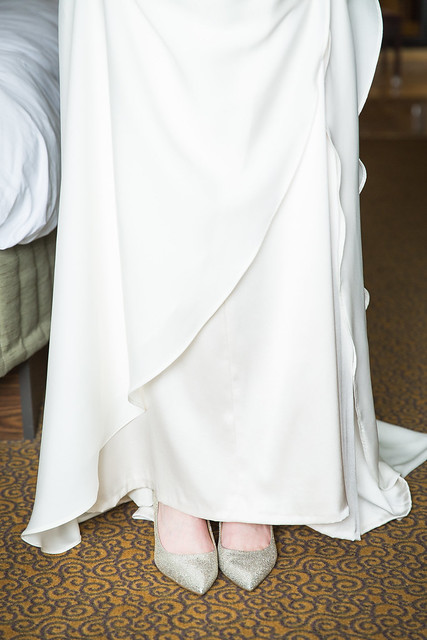
Oh, the hems! How I agonized over the best way to sew the hems so the dress wouldn’t look “homemade.”
First, I had to figure out the correct amount to turn the hem up on the silk layer. I jacked up my dress form to the height I would be wearing my heels (originally I was going to wear flats but they looked plain awful with my dress!) and turned up the hem slightly at the center front and tapered the hem as I got to the sides of the skirt. I actually goofed this up the first time I turned up the hem and had a nasty crease in the front from pressing the hem in place; I spent a lot of time steaming out that crease with a hand steamer.
The first attempt at hand sewing the silk hem also failed – for one, I used regular poly thread to sew the hem, which made the tiny hem stitches in the fabric very visible since the weight of the thread was heavier than the weight of the fabric. So, I ripped it all out and used silk thread instead, as I should have from the beginning. The hem was also pretty flimsy and needed a little extra “oomph” so the skirt would hold its shape and flow nicely. The solution to that was to cut long 1/2″ strips of lightweight sew-in interfacing, stitch together the strips into a loop the same measurement as the circumference of the silk skinny layer, and encase the interfacing loop in the fabric of the hem as I hand-stitched the hem in place. Problem solved!
For the silk georgette layers, I originally thought I was going to sew the hems by hand. Hah! Those skirts were a mile long and I would have pulled my hair out stitching all of those tiny stitches and the time it would take to do so. Plus, when I tried a test swatch of sewing a hem by hand, it looked wonky and not as crisp as I wanted since the fabric isn’t very stable. After lots of research online, watching Youtube videos, and asking Jen at Grainline Studio for some advice (thank you so much, Jen!), I figured out a way to hem my dress on my machine using my regular ol’ presser foot, no fancy rolled hem foot or spray stabilizer required. You can see in the above photo that the hems turned out nicely! There was a wavy effect of the rounded edge after I sewed the hems due to the bias nature of those parts of the skirts, but I kind of liked how it turned out.
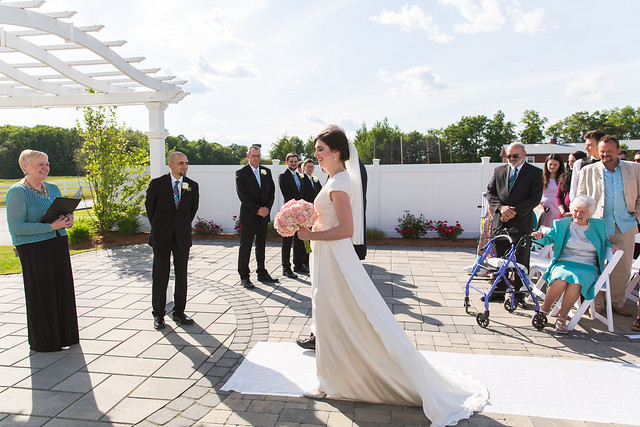
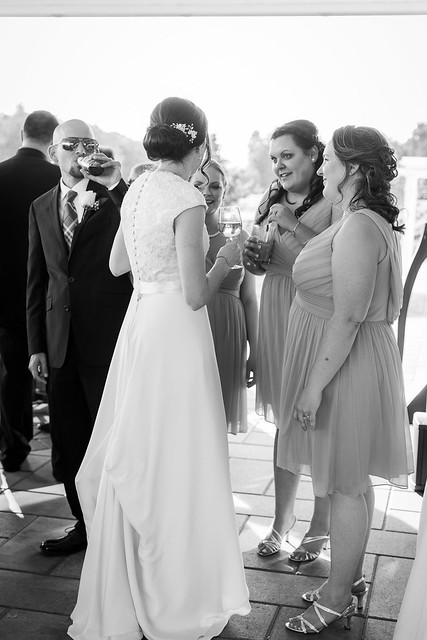
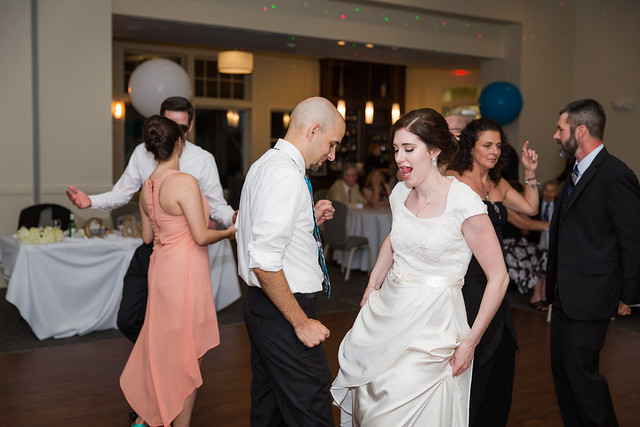
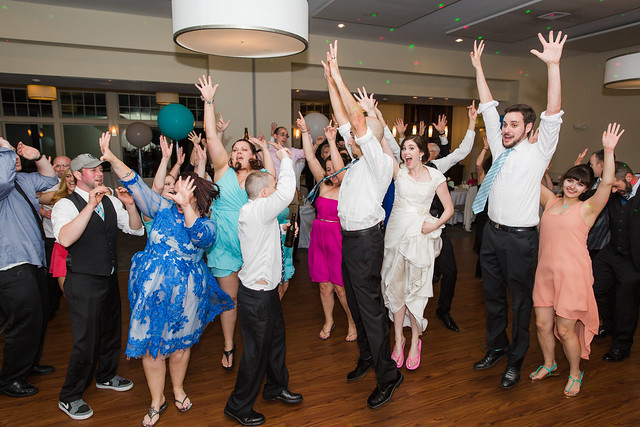
And yes, as soon as dinner was over I kicked off my heels and donned a pair of flip flops. Comfort over fashion, my friends.
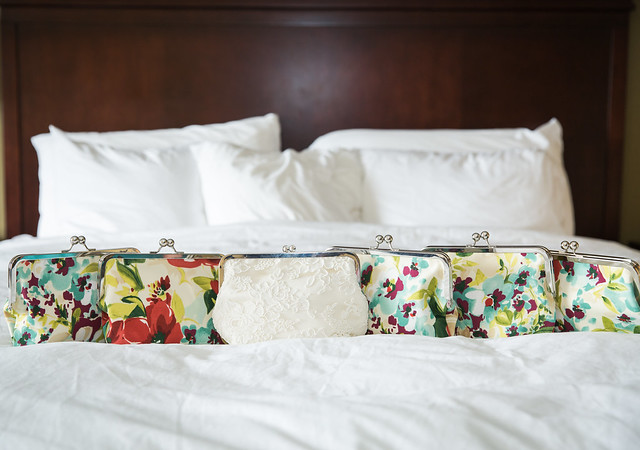
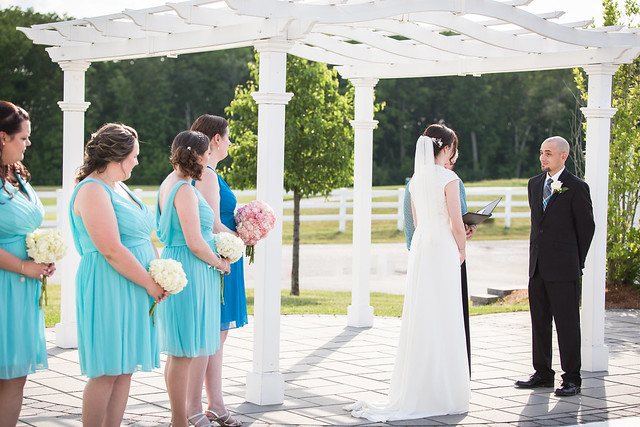
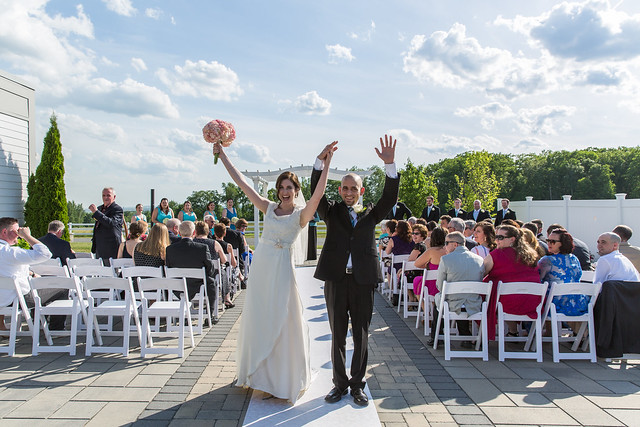
Well, that was a pretty exhaustive post! Like I mentioned at the beginning of this post, making my wedding dress was the absolute right decision for me on my wedding day, and there’s not a single thing I would have done differently. It definitely was a journey that challenged me mentally at times, as well as my technical skills, but after making my own freaking wedding dress, I feel like I can tackle any sewing project that comes my way now.
